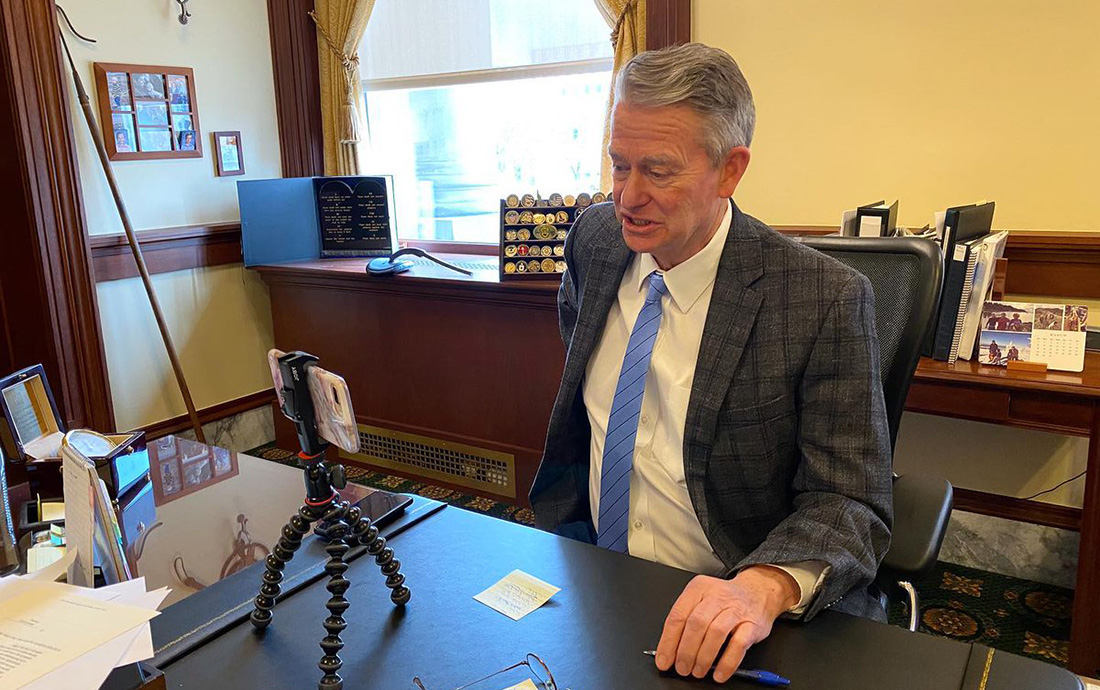
Making sense of Little’s FY22 budget
By Fred Birnbaum
There is only one job the state Legislature must do each and every year: Pass a balanced budget. Gov. Brad Little has done a much better job than his predecessor containing spending, but that doesn’t mean his budget proposal is perfect. Here are seven things to like (and seven not to like) about the spending blueprint the governor has handed lawmakers for their consideration:
Things to like about the budget:
- The budget creates a great balance sheet – a statement of financial position. It preserves Idaho’s fiscal standing as among the best of the states.
- Tax relief: The budget sets aside $455 million in tax relief, although Little’s plan lacks specifics.
- A significant part of the spending that comes from the trickle-down effect of the $8 billion in federal money pumped into the state via the CARES Act is being used to pay for one-time projects for things, like infrastructure: specifically roads, broadband, and capital construction. Some of these are necessary for a growing state.
- Roughly 80% of the one-time savings from reversions, holdbacks, and rescissions ordered for the Fiscal Year 2021 budget are being plowed back into projects, like transportation projects that address infrastructure needs.
- There is a lot of flexibility for the Legislature to adjust priorities for both tax relief and spending.
- The Fiscal Year 2022 new line-item spending requests are minimal and actually sum to a net reduction due to the elimination of number of line items and a temporary Medicaid cost containment initiative.
- The revenue forecast for FY22 is relatively conservative, which may restrain spending. About one-third of the ongoing revenue increase is slated for tax relief, in addition to the use of the tax relief fund.
Things not to like about the budget:
- The budget provides a lot of details and leadership as a spending blueprint but little guidance on tax relief. Recent history suggests that tax relief becomes an afterthought without executive leadership. This budget creates “placeholders” for tax relief – hardly a declaration of purpose.
- Medicaid is projected to cost about $3.6 billion or about 36% of the total budget. That sum includes general, dedicated, and federal dollars. Aside from a modest $30 million cost containment, this budget does nothing to tackle this unsustainable program. The recent Medicaid expansion is simply an unaffordable budget buster.
- The budget makes no attempt to clamp down on social justice spending in the college and university system. The FY 21 5% holdback is restored, and the budgets are increased with a General Fund hike and spending authority for more than $49 million of federal dollars under the CARES Act.
- The budget gives K-12 a pass. Federal dollars allowed spending to grow 16% this year, and this budget simply continues the current course of action, with no promise of reform for things like education savings accounts. The spending blueprint focuses on preserving the current system, not giving families education choice or creating any path for meaningful reform. Putting another $20 million into a summer literacy program is one example of throwing money at an intractable problem.
- The $160 million slotted for ongoing tax relief shifts $105 million from a tax relief fund, providing a net reduction of about $55 million from the General Fund. This is less money than will be pumped into the state’s coffers for its rainy day funds, which total about $245 million, on top of nearly $600 million in place already. Granted, the rainy day infusion is one-time money, but shifting a portion of this into ongoing relief would be more helpful to Idaho’s families. Families have had to tighten their belts, but state agencies are getting an increase, plus a nice cushion for the future.
- Little’s approach to budgets is a sea change from that of Gov. Butch Otter, but that was a low bar. This budget still gives virtually every state agency more money than FY 21, with the base budget growing about 3.4% from the prior year. State employees get a 2% pay raise and a continuation of their generous benefits.
- A myriad of other non-essential or generally leftist political actors get higher funding, including public television, the Idaho Hispanic Commission, and Idaho Commission on the Arts. It is also not clear that all of the Building Idaho’s Future Investment Package is worthwhile. Will Idaho get the best return on investment for $60 million in water and agriculture infrastructure, $35 million in broadband, and potentially some of the $96 million in capital construction projects?
Note on budget: The budget is composed of General Funds, Dedicated Funds, and Federal Funds. Most of the focus here is on the General Fund, which is largely supported by income and sales taxes.
Budget discussions compare the changes in original appropriations in the prior year to the proposed appropriations in the coming year. The base budget, which is the carry-over budget starting point, is rarely discussed. From FY18 to the FY22 request, the base has increased about 5.8% per year. FY22 is the first year under this trend-line.
Lawmakers must take care to ensure that the infusion of federal COVID relief funds don’t end up permanently growing government spending. For example, the FY22 line item request (for new spending) includes about 106 positions. While this is shown as no net increase from FY21 because many positions authorized in FY21 were not filled, it is worrisome that other positions are being added when so many businesses tightened their belts. Once added, government headcount is very difficult to reduce.
From idahofreedom.org